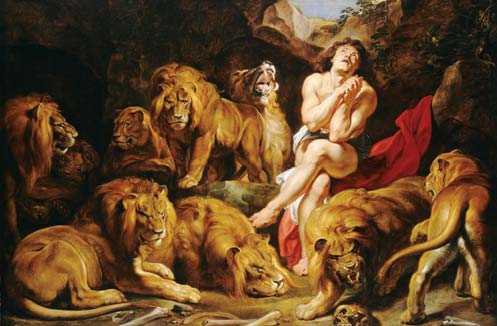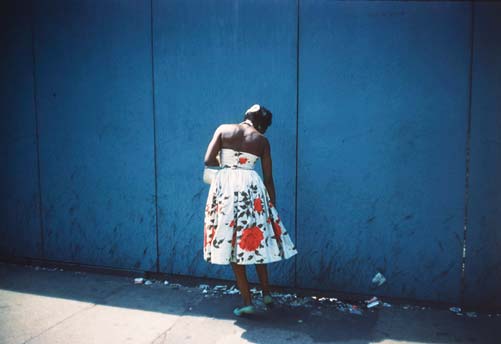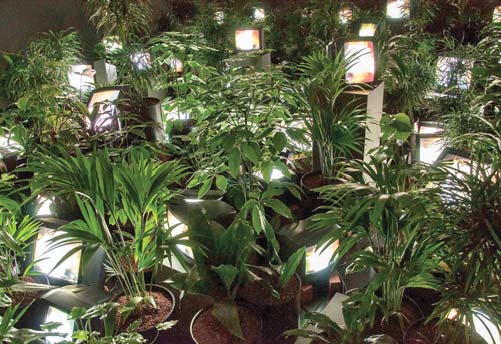March 10 to July 7
Jacopo Tintoretto was born 500 years ago, but until now the master painter has never had a retrospective in North America. Better late than never, particularly when the final product involves a series of spectacular loans that have never been seen before in the US. The exhibition first appeared at the Palazzo Ducale in Venice as part of a citywide celebration of the artist’s birth. For its US debut at the National Gallery, the exhibition will be altered and expanded, with close to 50 paintings plus a dozen drawings. It will be further boosted by two component shows on view at the same time — one of Venetian prints and another of Venetian drawings. Main image: Jacopo Tintoretto, The Madonna of the Treasurers, 1567
March 12 to June 9
When photography was in its infancy, the camera operator was considered just that: someone who managed a machine and nothing more. A few early proponents, including the Swedish born, UK-based Oscar Rejlander (1813-1875), made a concerted effort to change that perception. In a comprehensive new show that originated at the National Gallery of Canada, viewers can see the results of Rejlander’s efforts. This exhibition of 150 works includes his undisputed masterpiece, The Expression of the Emotions in Man and Animals (1872), which he created by exposing 30 negatives then collaging them together to print a single picture.
 Sir Peter Paul Rubens, Daniel in the Lions’ Den, circa 1614/1616
3. Early Rubens at the Legion of Honor Museum, San Francisco
Sir Peter Paul Rubens, Daniel in the Lions’ Den, circa 1614/1616
3. Early Rubens at the Legion of Honor Museum, San Francisco April 6 to Sept 8
Peter Paul Rubens was a superstar almost from the beginning of his career. By the time he was in his early 30s, he had already found patronage from the aristocracy of Europe, and in arguably the most fertile period of his career, from 1609 through 1621, Rubens created a body of work that would solidify his place in the canon. The Legion of Honor Museum has organised a show with more than 30 paintings and 20 works on paper from that period, including some of his notable large-scale, life-size paintings, which have been loaned from institutions across Europe and the US.
March 17 to June 30
If Lincoln Kirstein is remembered at all, it is for co-founding the New York City Ballet. But Kirstein, who was born into a prosperous Boston family in 1907, was also a curator, collector and writer. This exhibition will include more than 200 works from MoMA’s permanent collection. (He was also, for those less interested in New York’s avant-garde, one of the “monuments men” who went into Europe to save Nazi-confiscated art.) There will be works from Kirstein’s close friend, Walker Evans, paintings by intimates such as Pavel Tchelitchew, costume designs by Paul Cadmus for ballets he commissioned, and Latin American art that Kirstein acquired for MoMA including works by Antonio Berni and Raquel Forner.
 Garry Winogrand, Untitled (New York), 1960
5. Garry Winogrand: Color at the Brooklyn Museum, New York City
Garry Winogrand, Untitled (New York), 1960
5. Garry Winogrand: Color at the Brooklyn Museum, New York CityMay 3 to Aug 18
Winogrand (1928–1984) is famous for his black and white snapshots of mid-century New York. His lush colour photography of the same subjects — commuters, teens, high society and everything in between — is more obscure, in large part because it has not been exhibited significantly since 1967. (That year, he included 80 colour images in MoMA’s New Documents exhibition, which were displayed in a slide projector. However, the projector broke and was not replaced, meaning few if any visitors saw the colour photographs even then.) Now the Brooklyn Museum is putting on the first-ever dedicated exhibition of Winogrand’s colour photography, with more than 450 images displayed as slide projections. 6. The Venice Biennale’s 58th International Art Exhibition
May 11 to Nov 24
Every two years, much of the art world congregates in Venice for what should, in theory, be a relic from another age: Dozens of countries fill their pavilions in the city’s formal gardens with contemporary art that establishes some approximation of national prestige. The show is augmented by a colossal exhibition in the Arsenale, a warehouse nearby, which this year will be curated by the director of London’s Hayward Gallery, Ralph Rugoff. The whole thing should feel antiquated — a sort of “World’s Fair”-style get-together for the culturally minded — but as geopolitics threaten to devolve into a mid-century freeze, the biennial has suddenly taken on a genuine urgency. Culture, in a turn that has surprised more than a few people, is back on the global forefront for the first time since the 1950s. 7. Manet and Modern Beauty at the Art Institute of Chicago
May 26 to Sept 8
In a crowded field, Edouard Manet is probably the greatest portraitist of the 19th century. His proto-modernist depictions of friends, models and strangers have an otherworldly quality, particularly in his paintings of women. Olympia, probably his masterpiece, has been dissected by thousands of critics for the past 150 years, but his smaller, less monumental portraits are equally enchanting. For the first time in 50 years, the Art Institute is putting on a show of these works, with 54 paintings and 90 works in total, drawn in part from its excellent permanent collection. The art will be supplemented with letters Manet sent to friends, which he illustrated with pictures of fruit and flowers. 8. Women Artists in the Nationalgalerie Before 1918 at the Alte Nationalgalerie, Berlin
Oct 11 to Jan 26, 2020
It is almost absurd to complain about too many famous masterpieces, but anyone who has been to a blockbuster exhibition is familiar with the fatigue that sets in — it is hard, if not impossible, to bask in recognisable painting after painting after painting without losing your focus. That is why exhibitions such as this survey of women artists in the permanent collection of Berlin’s Alte Nationalgalerie will be such a treat — there is depth and variation, in style, content and talent. There are star artists such as Käthe Kollwitz, along with a host of obscure albeit compelling work; in its totality, it is as much a historical snapshot as it is an art exhibition.
 Nam June Paik, TV Garden, 1974-7 (2002)
9. Nam June Paik: The Future is Now at the Tate Modern, London
Nam June Paik, TV Garden, 1974-7 (2002)
9. Nam June Paik: The Future is Now at the Tate Modern, LondonOct 17 to Feb 9, 2020
An exhibition devoted to video art might not have the popular appeal of, say, a Michelangelo blockbuster, but Nam June Paik, the so-called father of the medium, knew how to put on a show. His art is not just videos on screens. It is often sculptures — weird, confusing, occasionally very large sculptures, including a room-sized installation — in which videos and televisions feature heavily. Much of Paik’s art is half a century old, but visitors will discover that almost all of it feels surprisingly current. 10. Sofonisba Anguissola and Lavinia Fontana: Two Models of the Female Artist at the Prado, Madrid
Oct 22 to Feb 2, 2020
It is always nice when a startling reappraisal of gender, politics and power intersects with very good art. Happily, the Prado is set to put on just such a show. Sofonisba Anguissola (1535-1625) and Lavinia Fontana (1552-1614) were both genuinely famous female artists who found royal patronage across Europe. Anguissola, an aristocratic Italian, rose to fame at the Spanish court in Madrid. Fontana, also Italian, though markedly lower-born, found fame in Rome. Both are relatively obscure today, but the Prado’s exhibition, which includes more than 60 works, should rectify that quite quickly. — Bloomberg LP








